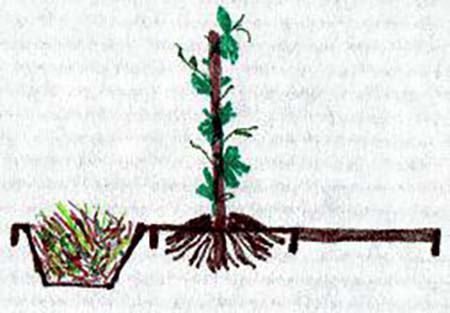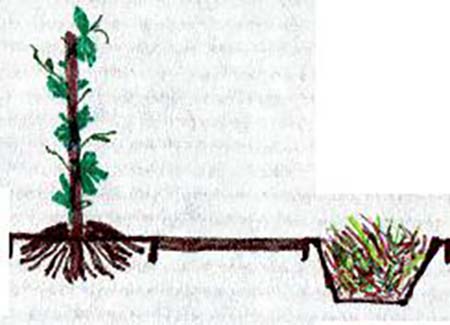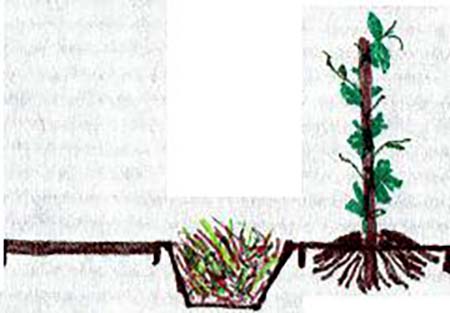Trench Composting
How To Guide
Trench Composting is method used by individuals who have gardens arranged in rows. If your garden is arranged some other way (1 x 1 foot squares, etc.) you may adapt this system to something that makes sense for your arrangement. Because this method is usually used in vegetable gardens, we recommend that you do not deposit pet feces in this method.

You basically dig a trench and fill it with things that you want to compost. We have a list of what you can and can’t compost. Then you cover it with some soil and let nature do its thing.
Rotation of Rows
The garden is arranged in sets of three rows which we will refer to as #1, #2, #3. These rows are rotated in a three-year rotation schedule.
So once year 3 is up, you start again back a year 1
Year One
The first year, a trench is dug in Row #1 in which to deposit compost all year. Crops are planted in row #2. Row #3 is used as a walking path so that there is access to the plants.

Year Two
The second year, crops are planted in row #1 which is fertile from the compost of year 1’s deposits. Row #2 from which crops were harvested is used as a walking path, leaving the spent soil fallow to fully recover. A trench is dug in the compacted path of row #3 in which to deposit compost during year 2.

Year Three
The third year, crops are planted in row #3 which is fertile from the compost of year 2’s deposits. Row #1 from which crops were harvested is used as a walking path, leaving the spent soil fallow to fully recover. A trench is dug in the compacted path of row #2 in which to deposit compost during year 3.

Benefits
This process provides newly enriched soil for each year’s crops as well as giving this year’s used soil a year to rejuvenate. It also avoids the need to build, turn, and harvest a compost pile, as well as spread finished compost.
The down side is that this method requires space. You would have to have the Crop row and Path row anyway, but now room is dedicated to the Compost row. In the same space you previously had 3 rows of crops, you will have room for only two.
